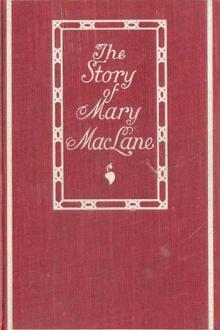Forty-Six Years in the Army, John McAllister Schofield [best books to read for self improvement TXT] 📗

- Author: John McAllister Schofield
- Performer: -
Book online «Forty-Six Years in the Army, John McAllister Schofield [best books to read for self improvement TXT] 📗». Author John McAllister Schofield
General Sherman estimated the force left with Thomas ( 1) at about 45,000 (exclusive of the Fourth and Twenty-third Corps, and Smith's corps coming from Missouri), in which he included about 8000 or 10,000 new troops at Nashville, and the same number of civil employees of the quartermaster's department. The Fourth and Twenty- third corps he estimated at 27,000 men, and Smith's at 10,000, and the cavalry in the field at 7700. All this was sufficiently accurate if no account were taken of men unfit for duty or not equipped. But the official returns show that the number of officers and men present for duty equipped amounted to 49,322 in the department, and in the two corps in the field to 24,265, and in the cavalry in the field, to 4800. There were therefore the following discrepancies in Sherman's estimate, due in part to the discharge of men whose terms had expired, as well as to the usual number of men not equipped for duty in the ranks: In the troops in the department, a discrepancy of 8000; in the army corps in the field, 2735; in the cavalry in the field, 2900 ( 2)—a total discrepancy of 13,635. That is to say, Sherman's own estimate was in excess of Thomas's actual strength by a force greater than either of the two army corps he sent back to help Thomas. If he had sent back another large corps,—say the Fourteenth, 13,000 strong, having besides the moral strength due to the fact that it was Thomas's old corps,—the discrepancy in his own estimate would doubtless have been sufficiently overcome, and the line of Duck River at least, if not that of the Tennessee, as Sherman had assured Grant, would have been securely held until A. J. Smith arrived and Thomas could assume the offensive.
Hood's force was ready to invade Tennessee in one compact army, while Thomas then had in the field ready to oppose it a decidedly inferior force, even admitting the lowest estimate made of that hostile army.
THE UNTENABLE POSITION AT PULASKIThe superiority of the enemy's cavalry made it necessary that the garrisons of all essential posts and the guards of important railroad bridges should be strong enough to resist attack from a large force of dismounted cavalry and light artillery, so long as Thomas was compelled to remain on the defensive. The records of that time indicate that Thomas then appreciated, what mature consideration now confirms, that if Hood's advance had induced him (Thomas) to draw off sufficient troops from garrisons and railroad guards to enable him to give battle on equal terms to Hood at Pulaski or Columbia, a raid by Hood's cavalry would probably have resulted in the destruction or capture of nearly everything in the rear, not only in Tennessee, but also in Kentucky, except perhaps Nashville and Chattanooga. It was only wise forethought which suggested that such might be the nature of Hood's plans, especially in view of the season of the year and the condition of the roads, which made aggressive operations of a large army, where all the hard roads were held by the opposing forces, extremely difficult. The official returns, now published in the War Records,( 3) show that the troops were sufficient only for the purpose of garrisons and guards and defensive action in the field until after the arrival of A. J. Smith; and this is true even if Hood's cavalry force was no larger than that which now appears from Forrest's report—5000; for Forrest might easily have got a day or two the start of his pursuer at any time, as had often been done on both sides during the war.
It is true that Sherman's instructions to Thomas appear to have contemplated the possibility, at least, that Thomas might be reduced to the extreme necessity of holding Nashville, Chattanooga, and Decatur defensively, even during a long siege, and of abandoning all points of less importance than the three named, so that all the garrisons of such minor points and all the railroad guards might be concentrated with the garrisons of these three important strategic points, for their defense during a siege. This must of course have referred to the defensive period of the campaign only, for the moment that Thomas's reinforcements should enable him to assume the offensive all the necessities above referred to must have disappeared. It must, I think, be admitted as beyond question that, in view of his daily expectation of the arrival of A. J. Smith's troops from Missouri, Thomas was perfectly right in not acting upon Sherman's suggestion of extreme defensive action, and thus abandoning his railroad to destruction.
If, on the other hand, Thomas's reinforcements had arrived in time to enable him to take the initiative by moving against Hood from Pulaski or Columbia, then he might have drawn quite largely from his garrisons in the rear to reinforce his army in the field, since his "active offensive" operations would have fully occupied Hood's cavalry, and thus have prevented a raid in Thomas's rear. But until he was strong enough to advance, unless forced to the extreme necessity of defending Nashville, Chattanooga, and Decatur, and abandoning all else, Thomas could not prudently have reduced his garrisons or guards.
I knew nothing at that time of Sherman's instructions to Thomas, and little about the actual strength of Thomas's garrisons and railroad guards. But I was under the impression that some reinforcements must be available from his own department, and felt a little impatient about the long delay in their arrival, and hence telegraphed General Thomas, November 24, suggesting the concentration of R. S. Granger's troops and those along the railroad. The despatches to me at that time, to be found in the War Records,( 4) fully show the earnest determination of General Thomas to send forward reinforcements as soon as possible, and even in detail, and to fight Hood at or near Columbia. Indeed, those despatches misled me somewhat as to what I might expect.
AVAILABLE TROOPS NOT SENT TO THE FRONTNotwithstanding this earnest desire, General Thomas does not appear to have realized the existence of a force available for the purpose he had in view. The railroad guards from Atlanta to Chattanooga or Dalton, withdrawn after Sherman started on his march, and convalescents, men returning from furlough and others going to the front, but failing to reach Sherman's army in time, all assembled at Chattanooga, made a surplus force at that point of about 7000 men.( 5) Some of these troops had been sent to East Tennessee, as well as all the mounted troops available in Kentucky, for the purpose of retrieving the disaster which had befallen the Tennessee military governor's troops there, under Gillem. But all sent from Chattanooga had been returned by November 21, about the time when Hood's advance from Florence had become certainly known. Yet it does not appear that General Thomas even inquired what force was available at Chattanooga until November 25, when, in reply to a telegram, he learned that Steedman could raise 5000 men (in fact, 7000), in addition to all necessary garrisons and guards, "to threaten enemy in rear," in case he should "get on Chattanooga railroad." It may then (November 25) have been too late to send those 5000 or 7000 men to the line of Duck River, or perhaps even to Franklin. They were sent to Nashville, reaching there after the battle of Franklin. If they had been ordered to Columbia by rail, via Nashville, as soon as Hood's advance was known to General Thomas, they must have reached Duck River some time before Hood attempted to cross that stream. This addition to the Fourth and Twenty-third Corps would have raised the infantry in the field to nearly an equality with that of Hood in fact, though not nearly to what Hood's force was then supposed to be. That increased force would doubtless have made it possible to prevent Hood from crossing Duck River anywhere near Columbia for several days, and perhaps to force him to select some other line of operations, or to content himself with sending his cavalry on another raid. In any case, the arrival of A. J. Smith a few days later would have enabled Thomas to assume the aggressive before Hood could have struck a serious blow at Thomas's army in the field. In view of the earnest desire of General Thomas to reinforce the army in the field at Columbia, there does not appear to be any rational explanation of the fact that he did not send those 7000 men from Chattanooga to Columbia. His own report states the fact about those "7000 men belonging to his [General Sherman's] column," but does not give any reason why they were not used in his "measures to act on the defensive." As General Thomas says: "These men had been organized into brigades, to be made available at such points as they might be needed." At what other point could they possibly be so much needed as that where the two corps were trying to oppose the advance of the enemy long enough for Thomas to get up his other reinforcements?
AVAILABLE TROOPS NOT SENT TO THE FRONTGeneral Thomas appears to have been puzzled by doubt whether Hood would aim for Nashville or some point on the Nashville and Chattanooga Railroad, and not to have realized that his own plan should have been to concentrate all his available force into one army, so as to move against the enemy with the greatest possible force, no matter what the enemy might do. With the exception of those 7000 men belonging to Sherman's column, Thomas had for necessary garrisons and railroad guards essentially the same number of men as had been employed in that service all the preceding summer,—no more and no less,—and the necessity for that service had not been very much diminished, except at and about Decatur, Stevenson, and Tullahoma, which Hood's advance from Florence had rendered of no further consequence at that time. But the 7000 men available at Chattanooga ought unquestionably to have been sent to Columbia, or at least moved up to Nashville or Franklin, where they could "join the main force," as suggested in my despatch of November 24 to Thomas,( 6) instead of being left in Chattanooga "to threaten enemy in rear."( 7) As suggested in my despatch of November 24, R. S. Granger's force and others along the railroad south of Duck River, as well as Steedman's, might have joined the main force at Columbia, if orders had been given in time, thus increasing the army in the field by fully 10,000 men.
If R. S. Granger's force had been left at Decatur, it would have drawn off from Hood's invading army at least an equal force to guard his bridges at Florence, or else would have destroyed those bridges and cut off his retreat after the battle of Nashville. This was practically what had been suggested by Sherman in his instructions to Thomas. But the withdrawal of Granger's troops and their detention at Murfreesboro', instead of sending them to "join the main force," served no good purpose at the time, and prevented their use in the capture of Hood's defeated and retreating troops. The failure to make this timely concentration was the one great fault in Thomas's action, instead of his delay in attacking at Nashville, for which he was so much criticized. But Hood's repulse at Franklin had made this previous mistake a matter of past history, and hence it was lost sight of in view of the imminent danger afterward supposed to exist at Nashville, just as the brilliant victory at Nashville was accepted as demonstrating the wisdom of all that had





Comments (0)